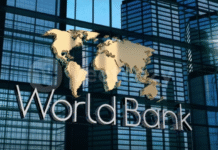U.S. inflation remained stubbornly high in September, though price increases were slightly lower than economists had feared, offering cautious relief to consumers and policymakers grappling with the effects of tariffs, high energy costs, and a slowing job market.
According to the Labor Department, consumer prices rose 3% in September from a year earlier — up from 2.9% in August and the highest level since January. Excluding food and energy, core inflation also stood at 3%, slightly down from 3.1% the previous month.
On a monthly basis, the Consumer Price Index (CPI) increased 0.3%, compared with 0.4% in August. Core prices, which strip out volatile categories, rose 0.2%, signalling that underlying inflationary pressures may be easing.
Tariffs and Energy Prices Drive Costs
The latest data comes as the Trump administration’s trade tariffs continue to ripple through supply chains. Analysts say the levies — introduced in April and only partially rolled back through subsequent trade deals — are adding roughly 0.4 percentage points to annual inflation.
Businesses have so far absorbed much of the added cost, but many warn they may be forced to pass on price increases if tariffs remain in place. “People are getting to the point where they can’t hold it anymore,” said Diane Swonk, chief economist at KPMG.
Energy prices were a major contributor to September’s inflation rise, with gasoline costs jumping 4.1% from August. Grocery prices rose 0.3%, up 2.7% year-on-year, while furniture and household goods climbed nearly 1% amid higher import duties.
Rents Cool but Affordability Still a Concern
One bright spot came from the housing sector, where rent growth continued to slow. Rental costs increased just 0.2% in September and 3.4% over the past year — the smallest annual rise in nearly four years — as the post-pandemic surge in housing costs receded.
Despite these improvements, inflation remains above the Federal Reserve’s 2% target, keeping pressure on policymakers ahead of their meeting next week. Officials are widely expected to cut interest rates for the second time this year, seeking to support growth while guarding against inflationary persistence.
Data Delays and Political Implications
The inflation report was released more than a week late due to the ongoing government shutdown, which began on October 1. The Trump administration said no inflation report will likely be issued next month — a first in U.S. history — because field surveyors are unable to collect data during the shutdown.
The administration recalled some Labor Department employees to complete the September figures, as they are used to calculate the annual Social Security cost-of-living adjustment, set at 2.8% for 2026 — roughly $56 per month for 70 million recipients.
Consumers Still Feeling the Squeeze
For millions of Americans, living costs remain a source of strain. Ground beef prices climbed to a record $6.32 per pound, up nearly 15% from a year ago, partly due to tariffs on imports and years of drought that have reduced cattle herds.
President Donald Trump has suggested importing Argentine beef to lower prices, a move that has angered U.S. ranchers but could ease pressure on consumers.
A survey by the Associated Press–NORC Center for Public Affairs Research found that half of Americans now cite grocery costs as a “major source of stress.”
Economist Eric Winograd of AllianceBernstein summed up the outlook: “While inflation doesn’t appear to be accelerating, neither is it falling back toward target. That will keep the Fed cautious rather than aggressive.”
Source: AP











